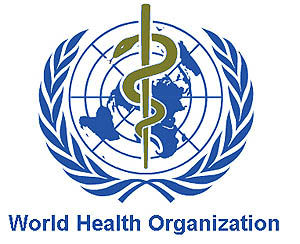

Practical advice on maintaining a healthy diet
Fruit and vegetables
Eating at least 400 g, or five portions, of fruit and vegetables per day reduces the risk of NCDs and helps to ensure an adequate daily intake of dietary fiber.
Fruit and vegetable intake can be improved by:
Reducing the amount of total fat intake to less than 30% of total energy intake helps to prevent unhealthy weight gain in the adult population. Also, the risk of developing NCDs is lowered by:
Most people consume too much sodium through salt (corresponding to consuming an average of 9–12 g of salt per day) and not enough potassium (less than 3.5 g). High sodium intake and insufficient potassium intake contribute to high blood pressure, which in turn increases the risk of heart disease and stroke .
Reducing salt intake to the recommended level of less than 5 g per day could prevent 1.7 million deaths each year .
People are often unaware of the amount of salt they consume. In many countries, most salt comes from processed foods (e.g. ready meals; processed meats such as bacon, ham and salami; cheese; and salty snacks) or from foods consumed frequently in large amounts (e.g. bread). Salt is also added to foods during cooking (e.g. bouillon, stock cubes, soy sauce and fish sauce) or at the point of consumption (e.g. table salt).
Salt intake can be reduced by:
Potassium can mitigate the negative effects of elevated sodium consumption on blood pressure. Intake of potassium can be increased by consuming fresh fruit and vegetables.
In both adults and children, the intake of free sugars should be reduced to less than 10% of total energy intake. A reduction to less than 5% of total energy intake would provide additional health benefits.
Consuming free sugars increases the risk of dental caries (tooth decay). Excess calories from foods and drinks high in free sugars also contribute to unhealthy weight gain, which can lead to overweight and obesity. Recent evidence also shows that free sugars influence blood pressure and serum lipids, and suggests that a reduction in free sugars intake reduces risk factors for cardiovascular diseases.
Sugars intake can be reduced by:
Diet evolves over time, being influenced by many social and economic factors that interact in a complex manner to shape individual dietary patterns. These factors include income, food prices (which will affect the availability and affordability of healthy foods), individual preferences and beliefs, cultural traditions, and geographical and environmental aspects (including climate change).
Therefore, promoting a healthy food environment – including food systems that promote a diversified, balanced and healthy diet – requires the involvement of multiple sectors and stakeholders, including government, and the public and private sectors.
Governments have a central role in creating a healthy food environment that enables people to adopt and maintain healthy dietary practices. Effective actions by policy-makers to create a healthy food environment include the following:
Encouraging consumer demand for healthy foods and meals through:
Promoting appropriate infant and young child feeding practices through:
Saturday to Wednesday: morning and afternoon
Thursday: Morning